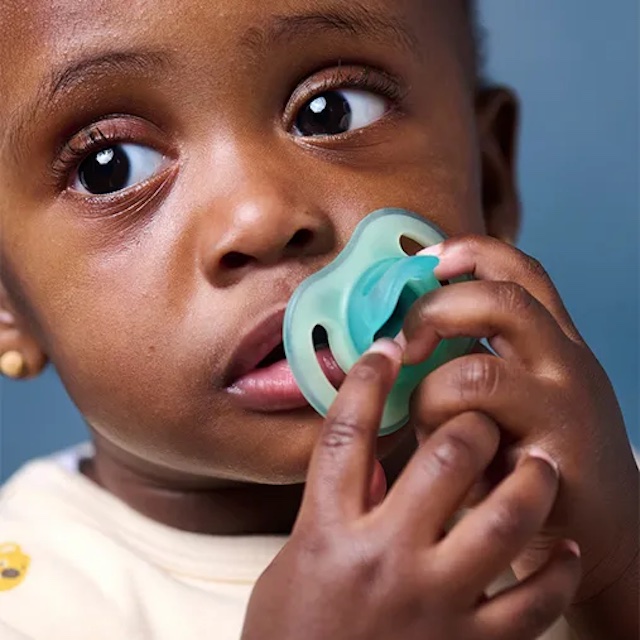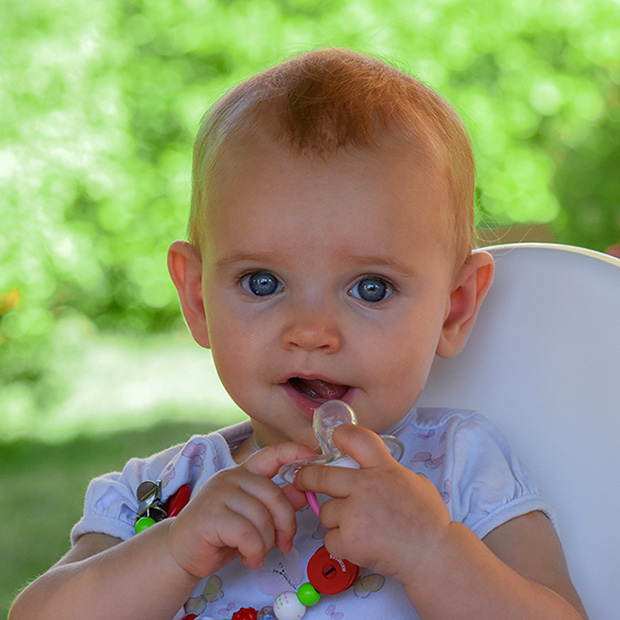Introduction
Do pacifiers mess up teeth? Pacifiers have long been a go-to solution for soothing infants and providing comfort. However, concerns about their impact on a child’s dental health have led many parents to question whether pacifiers are truly beneficial or potentially harmful. Understanding the relationship between pacifier use and dental development is crucial for making informed decisions that promote your child’s overall well-being. Do pacifiers mess up teeth? In this comprehensive guide, we will explore the effects of pacifiers on dental health, delve into expert recommendations, and provide practical advice for managing pacifier use. By the end of this article, you’ll have a clear understanding of how pacifiers can affect your child’s teeth and what steps you can take to ensure optimal dental health.
The Role of Pacifiers in Early Childhood
Benefits of Pacifier Use
Soothing and Comfort
One of the primary reasons parents opt for pacifiers is their ability to soothe and comfort infants. Sucking is a natural reflex for babies, and pacifiers can provide a calming effect, helping to reduce fussiness and promote better sleep. Studies have shown that pacifiers can also help regulate breathing and heart rate, contributing to a more stable and relaxed state for newborns.
Reduced Risk of SIDS
Research has indicated that pacifier use during sleep may reduce the risk of Sudden Infant Death Syndrome (SIDS). The exact mechanism is not fully understood, but it is believed that pacifiers may keep the airway open and prevent the baby from turning onto their stomach, which can obstruct breathing. For this reason, many pediatricians recommend offering a pacifier during naps and nighttime sleep.
Potential Drawbacks
Dependency and Weaning Challenges
While pacifiers offer numerous benefits, they can also lead to dependency if used excessively. Some children become so accustomed to using a pacifier that they find it difficult to wean off as they grow older. This can pose challenges for parents who want to transition their child away from pacifiers, particularly if the child uses it as a primary source of comfort.
Increased Risk of Ear Infections
Frequent pacifier use has been associated with an increased risk of ear infections, especially in young children. The constant sucking motion can cause pressure changes in the Eustachian tubes, leading to fluid buildup and potential infection. While this risk is relatively low, it is something to consider when deciding on pacifier use.
How Pacifiers Can Affect Dental Development
Short-Term Effects on Teeth and Jaw
Alterations in Tooth Alignment
In the short term, pacifier use can cause temporary changes in tooth alignment. The constant pressure from sucking can push the front teeth forward, leading to an overbite or open bite. These changes are usually reversible if the pacifier is discontinued before permanent teeth begin to emerge. However, prolonged use can make these alterations more permanent.
Impact on Jaw Development
Pacifiers can also influence jaw development, particularly if used extensively during critical growth periods. The shape and structure of the palate may be affected, potentially leading to a narrower arch or misalignment of the jaw. Proper jaw development is essential for ensuring adequate space for adult teeth and maintaining proper bite function.
Long-Term Effects on Dental Health
Malocclusion and Orthodontic Issues
If pacifier use continues beyond the early years, it can contribute to malocclusion—misalignment of the teeth and jaws. Common issues include overbites, underbites, crossbites, and open bites. These problems often require orthodontic intervention, such as braces or other corrective treatments, to address. Early prevention through timely discontinuation of pacifiers can help avoid these complications.
Oral Habits and Muscle Function
Prolonged pacifier use can also affect oral habits and muscle function. Children who rely heavily on pacifiers may develop patterns of tongue thrusting or improper swallowing, which can further impact dental alignment and jaw development. Encouraging healthy oral habits from an early age is crucial for promoting optimal dental health.
Factors Influencing Pacifier Impact on Dental Health
Age and Duration of Use
Early vs. Late Pacifier Use
Do pacifiers mess up teeth? The age at which a child begins using a pacifier and how long they continue can significantly influence its impact on dental health. Early pacifier use, typically within the first few months, is generally considered safe and beneficial. However, continued use beyond two to three years can increase the risk of dental issues. Pediatric dentists often recommend phasing out pacifiers by age two to minimize long-term effects.
Frequency and Intensity of Use
The frequency and intensity of pacifier use also play a role. Infants who use pacifiers only during sleep or for short periods are less likely to experience significant dental changes compared to those who use them throughout the day. Limiting pacifier use to specific times can help reduce the pressure on developing teeth and jaws.
Type of Pacifier
Traditional vs. Orthodontic Pacifiers
Not all pacifiers are created equal. Traditional pacifiers with a round nipple design can exert more pressure on the roof of the mouth and teeth, potentially leading to greater dental changes. Orthodontic pacifiers, on the other hand, are designed to mimic the shape of a mother’s nipple and are intended to minimize adverse effects on dental development. Choosing an orthodontic pacifier can help protect your child’s teeth and jaws.
Material and Hygiene
The material and hygiene of the pacifier are also important considerations. Silicone pacifiers are generally preferred over latex due to their durability and resistance to bacterial growth. Regular cleaning and replacement of pacifiers are essential to maintain hygiene and prevent the spread of germs. Ensuring that pacifiers are clean and in good condition can support overall health.
Expert Recommendations and Guidelines
Pediatric Dentistry Guidelines
American Academy of Pediatrics (AAP)
The American Academy of Pediatrics (AAP) supports the use of pacifiers for infants, particularly during sleep, to reduce the risk of SIDS. They recommend introducing a pacifier after breastfeeding is well established, typically around one month of age. The AAP also advises phasing out pacifiers by age two to prevent long-term dental issues.
American Academy of Pediatric Dentistry (AAPD)
The American Academy of Pediatric Dentistry (AAPD) provides guidelines for pacifier use based on dental health considerations. They suggest limiting pacifier use to bedtime and naptime and discouraging its use once permanent teeth start to come in. Regular dental check-ups are recommended to monitor dental development and address any concerns early.
Tips for Healthy Pacifier Use
Establishing Boundaries
Setting boundaries for pacifier use can help manage its impact on dental health. Encourage your child to use the pacifier only during sleep or specific times, such as during travel or stressful situations. Gradually reducing usage can make the transition easier and prevent dependency.
Promoting Alternative Comfort Methods
Introducing alternative comfort methods can ease the transition away from pacifiers. Offer comfort items like soft blankets, stuffed animals, or gentle rocking motions. Teaching your child self-soothing techniques, such as deep breathing or singing lullabies, can also help them feel secure without relying on a pacifier.
Managing Pacifier Use for Optimal Dental Health
Strategies for Weaning Off Pacifiers
Gradual Reduction
Gradually reducing pacifier use is often the most effective strategy for weaning. Start by limiting pacifier use to nighttime and gradually phase it out over several weeks. Offer comfort and reassurance during this period to help your child adjust. Consistency and patience are key to a successful transition.
Positive Reinforcement
Using positive reinforcement can encourage your child to give up the pacifier. Praise and reward them for going without the pacifier, especially during challenging moments. Create a reward system, such as stickers or small treats, to motivate your child and make the process more enjoyable.
Monitoring Dental Development
Regular Dental Check-Ups
Regular dental check-ups are essential for monitoring your child’s dental development. Pediatric dentists can identify early signs of dental issues and provide guidance on managing pacifier use. Routine visits also allow for early intervention if any problems arise, ensuring your child’s teeth and jaws develop properly.
Addressing Concerns Promptly
Do pacifiers mess up teeth? If you notice any changes in your child’s teeth or jaw alignment, consult your pediatric dentist promptly. Early detection and treatment can prevent more serious dental issues from developing. Stay proactive in addressing concerns and follow your dentist’s recommendations for optimal dental health.
Conclusion
Do pacifiers mess up teeth? Pacifiers can play a valuable role in soothing infants and providing comfort, but their impact on dental health must be carefully considered. Understanding the short-term and long-term effects of pacifier use, following expert guidelines, and implementing strategies for healthy use can help ensure your child’s teeth and jaws develop properly. By balancing the benefits of pacifiers with mindful management, you can promote both comfort and dental health for your child. Embrace informed decision-making and proactive care to support your child’s overall well-being and set them up for healthy.



